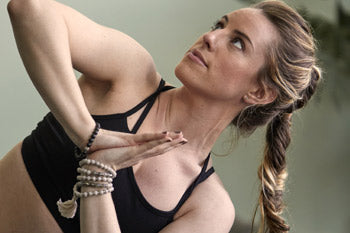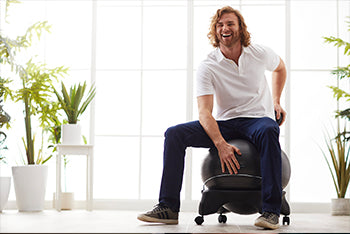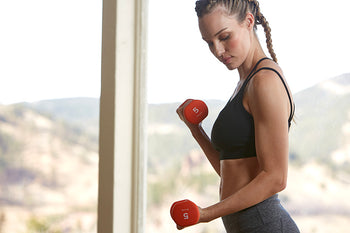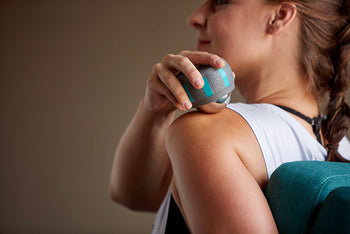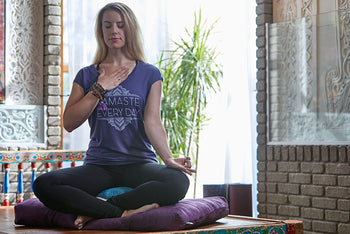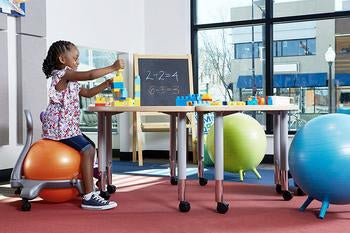Do You Have to Sit Cross-Legged to Meditate?

Authors: Ginny Figlar and Gaiam Staff
If you've tried to get into lotus position during meditation (or any semblance of a cross-legged seated meditation position) and found that your legs just don’t bend that way, you’re not alone, says yoga and meditation expert Rodney Yee. So we asked Yee to dive into the hows and whys of other meditation positions that can be more comfortable or practical for meditation.
What sitting positions are ideal for meditation?
Full lotus position meditation as shown here is considered by many to be the uber-pose for meditation, but it’s not accessible to everyone. It requires open hips and a lot of practice.
But complete ease in your position is very important to achieve when just starting out with meditation, because it will encourage you to meditate more frequently.
Hero Pose and crossed-legs pose both facilitate the movement of energy in the body. You get a lot of grounding just by doing them. There’s already a connection to the Earth that you don’t get in a chair. It sets up a neurological pattern in the legs in relation to the spine.
You can also prop up these poses to many, many levels using tools like a yoga block, blanket, or meditation cushion. Try these variations on Hero Pose and crossed-legs pose (positions you probably haven't sat in since you were a child).
1. Use props in hero pose.
Completely folding your legs in hero pose challenges you to soften the muscles of your calves, quads, and the backs of your knees while keeping the natural curve of the spine. Practice this pose without props for short periods of time at first — or try modifying it with props.
- Place a blanket (folded into a square just big enough to kneel on, with your toes hanging just off the edge of the blanket) or a meditation cushion beneath you.
- Add a yoga block or two as shown at right, placing the block(s) flat on the blanket between your ankles, and rest your sit bones on top of the block(s). The elevation can take pressure off the legs and help align the spine more easily, making it easier to sit upright for longer.
- Do the pose with your back against a wall, with or without the other props described above.
2. Use a wall for support in crossed-legs pose.
Crossed-legs pose is more open than lotus, and easier for most people to do.
Try doing this pose against a wall on top of a folded blanket, with a rolled towel or yoga mat beneath your ankles. The wall gives you feedback about spinal alignment and the work of your back muscles, while the blanket under your hips allows the pelvis to sit more upright.
To advance with meditating in this position, keep the blanket but move to the center of the room. The challenge here is to keep your torso from collapsing without the extra reminder of the wall, but reducing the tactile input to your nervous system can help your mind quiet down.
3. Modify other poses for greater comfort.
You can also use props and walls to support you more comfortably in several other seated positions that are excellent for meditation.
Try a variation on Cobbler's Pose by placing your back against a wall and using two yoga blocks as shown at right to support the legs, with a blanket or meditation cushion beneath the sit bones. This creates a very supportive foundation that is helpful if your hips aren't very open.
If you can't bend your knees in any of the ways above, try sitting on a blanket or meditation cushion, with your back against a wall, and simply straighten your legs gently out at a wide angle as shown at right, using rolled towels for support beneath your knees.
4. Try using a chair for seated meditation.
This can be a more practical option for many people. But don't just slump in the chair, obviously.
Place your sitting bones on the front of the seat of the chair and your feet directly under your knees. Lightly press yoru thighs into the chair seat and your feet into the ground. This naturally lifts your chest and brings natural curve and elongation to your spine.
5. Whatever your position, keep the curve of your back gentle and natural.
This applies to all of the meditation positions above. There are many stereotypes about meditation that lead many of you to believe that when you meditate, you must sit up straight and stay completely still — as if you were standing at attention in the military. In all honesty, meditation postures should be gentle and you should constantly realign your posture. Try to focus on maximizing the ease and flow of your breath, and your body will intuitively find a more subtle alignment...without disturbing your mind.
Why is it so hard for people to sit still?
As a beginner, a good goal is to be comfortable enough (using props as needed) to be able to meditate for five minutes. Yet sitting for five minutes in any posture with the intention of staying still is going to be difficult. Any little tweak or sensation in your body is going to seem exaggerated. We are so used to keeping ourselves busy — and a lot of us are not used to the physical sensations and thought patterns that come up when we're not staying constantly stimulated.
You might think this doesn't sound fun at all, but I assure you that after your first five-minute meditation — whether you've been completely agitated, blissful, or something in between — a magical space will start to open up.
Also try preceding your meditation practice with a series of yoga poses. Yoga and meditation are practiced together by many people because of the way yoga prepares the body and mind for meditation — including opening the hips so it's easier to sit in the poses shown above for longer periods of time.
As you become familiar with seated meditation, you will realize you can take this practice anywhere you go. You don't even need to be sitting, or even still. Meditation is more about a balance between inside and outside, an ease in your body, an acceptance of whatever is taking place, and an ability to be quiet, listen and let go.
Can you share your top beginner's tips on how to meditate?
Try to just be here now. You might listen to your breath, your heartbeat, calming music, or a mantra. Or listen to anything — let it all in. This is what I’ve been doing lately. Through meditation, you allow yourself to get into places to listen to your whole body, and your listening ability gets more keen.
To get more comfortable with the practice of just sitting quietly with yourself, starting in small increments is important. Fifteen minutes is good.
Meditate every day. Save the same time every day for it. Then you have a good possibility of sustaining it.
Also in Blog

Body Peace & Personal Empowerment

Yoga for Swimmers: Poses for Strength and Mobility


